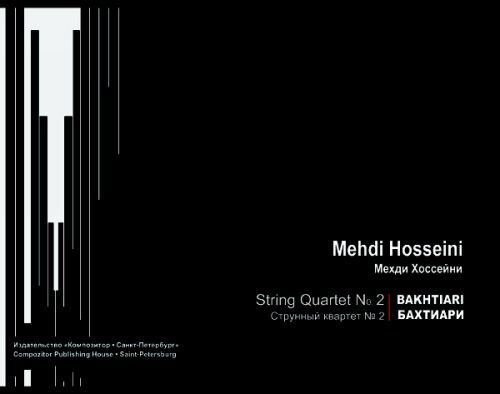Hosseini Mehdi: String Quartet No.2. Based on the Folk Music Material of Bakhtiari (Persia). Score
The Bachtiari are one of Iran’s native peoples. The nation comprises the Khaftlang and Chaharlang tribes, which live in the provinces of Chaharmahal and Bachtiari, Isfahan and Loresan. Chaharmahal and Bachtiari province is located in southwest Iran. The Bachtiari dialect belongs to the group of Western Iranian languages, and its speakers have a rich and flourishing traditiona l folk culture.
Music is one of the most important elements of traditional folk culture, as it displays the intellectual values and character of the people. Bachtiari music is among the richest and most extensive varieties of Persian maqam music.
The traditions and customs of the Bachtiari are reflected in the names of their magams. In the musical terminology of the Bachtiari people, ‚magam’ usually means ''tune'' (not a specific tonality or ‚mode’ as it is typically interpreted, but an entire system of pitches and pitch relationships), since for them the word magam implies an established musical text, which might vary in character, form, and even genre.
The magams are formed on the basis of traditional Persian system-scales (Dastgah). The most predominant among these are Shur, Avaz-e Dashti, Avaz-e Shushtari, Dastgah-e Chaharlang, and Se’gah.
Although Bachtiari music has much in common with the musical culture of other regions of Iran, much distinguishes it, as wel
 Deutsch
Deutsch English
English Español
Español Français
Français Polski
Polski Română
Română Slovenský
Slovenský Slovenščina
Slovenščina 中文
中文